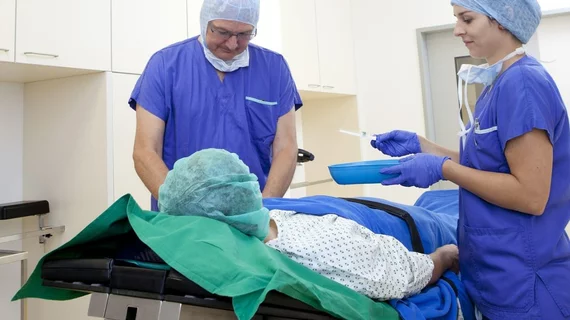Following radiation therapy for liver metastases, patients are just as well monitored with contrast-enhanced ultrasound as with contrast-enhanced CT, according to the authors of a pilot study running in the March edition of the Journal of Ultrasound in Medicine.
The finding may help guide selection of imaging modality by physicians keen on avoiding unnecessary doses of diagnostic radiation, especially cumulative doses from repeated CT scans.
Maria Marsico, MD, of Modena University in Italy and colleagues prospectively enrolled 24 patients with liver metastases. All patients received radiation therapy followed by contrast-enhanced imaging at one and two months post-therapy.
Three liver specialists interpreted the images with both modalities. They detected and treated 40 secondary liver lesions, and they graded the intermodality concordance between the ultrasound and the CT.
Marsico and team found intermodality agreement rates of, in ascending order of agreement, 0.767, 0.881 and 1.00.
Meanwhile their multivariate analysis of intermodality agreement showed an almost perfect value.
“This pilot study found excellent diagnostic correspondence between contrast-enhanced ultrasound and contrast-enhanced CT in the evaluation of local disease stability or progression after [radiation] therapy in liver metastases,” the authors concluded. “These findings suggest that contrast-enhanced ultrasound could play an important role in the surveillance of these patients because of its high accuracy and reproducibility, thus reducing the need for contrast-enhanced CT.”

